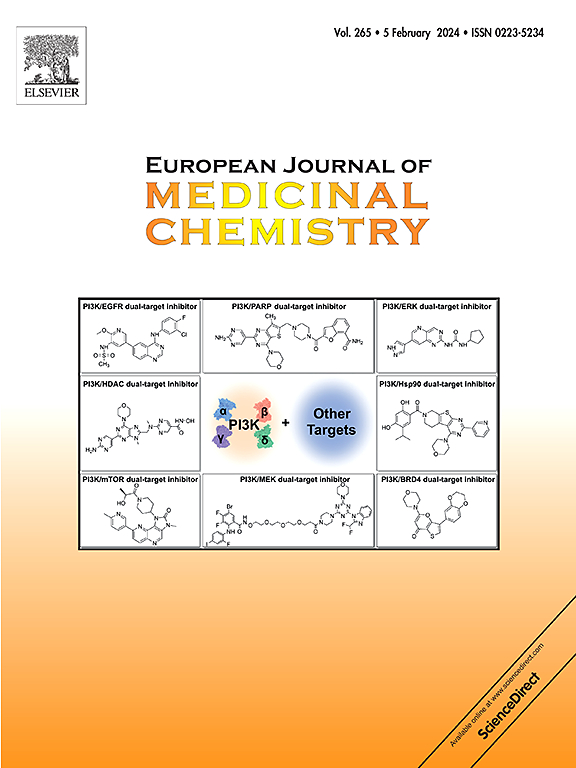Discovery of novel azetidine-based imidazopyridines as selective and orally bioavailable inhibitors of phosphodiesterase 10A for the treatment of pulmonary arterial hypertension
IF 6
2区 医学
Q1 CHEMISTRY, MEDICINAL
引用次数: 0
Abstract
Pulmonary arterial hypertension (PAH) is a chronic, progressive disorder of the pulmonary vasculature characterized by associated pulmonary and cardiac remodeling. Phosphodiesterase 10A (PDE10A) plays a crucial role in regulating cAMP concentration, thereby influencing pulmonary inflammation and pulmonary vascular remodeling. However, there is a lack of ideal PDE10A selective inhibitors available for PAH treatment. Herein, we employed structure-based drug design to develop a series of azetidine-based imidazopyridines, among which A30 demonstrated an IC50 value of 3.5 nmol/L against PDE10A with high selectivity over other PDEs, low blood-brain barrier permeability, and improved drug-like properties. Oral administration of A30 exhibited significant anti-PAH effects not only in monocrotaline-induced rats, but also in Sugen/hypoxia(Su/Hx)-induced PH mice. Our findings indicate that A30 inhibits PDE10A to suppress pulmonary vascular remodeling through the activation of cAMP-associated signaling pathways.


发现新型氮杂环丁烷基咪唑吡啶作为治疗肺动脉高压的磷酸二酯酶 10A 选择性口服生物利用抑制剂
本文章由计算机程序翻译,如有差异,请以英文原文为准。
求助全文
约1分钟内获得全文
求助全文
来源期刊
CiteScore
11.70
自引率
9.00%
发文量
863
审稿时长
29 days
期刊介绍:
The European Journal of Medicinal Chemistry is a global journal that publishes studies on all aspects of medicinal chemistry. It provides a medium for publication of original papers and also welcomes critical review papers.
A typical paper would report on the organic synthesis, characterization and pharmacological evaluation of compounds. Other topics of interest are drug design, QSAR, molecular modeling, drug-receptor interactions, molecular aspects of drug metabolism, prodrug synthesis and drug targeting. The journal expects manuscripts to present the rational for a study, provide insight into the design of compounds or understanding of mechanism, or clarify the targets.

 求助内容:
求助内容: 应助结果提醒方式:
应助结果提醒方式:


